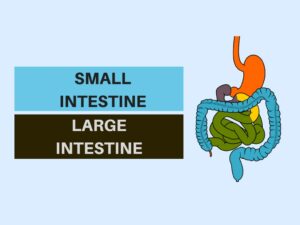The Difference Between Gastric Bypass and Gastric Sleeve
Gastric bypass and gastric sleeve are two types of weight loss surgeries that have been proven effective in helping individuals who are obese achieve and maintain a healthier weight. While both procedures aim to reduce the size of the stomach in order to limit food intake, there are several key differences between the two. In this article, we will explore what gastric bypass and gastric sleeve are, their uses, and the main differences between them.
What is Gastric Bypass?
Gastric bypass, also known as Roux-en-Y gastric bypass, is a surgical procedure that involves creating a small pouch at the top of the stomach and bypassing a section of the small intestine. This limits the amount of food that can be consumed and decreases the absorption of nutrients.
Examples of Gastric Bypass:
– A 30-year-old woman with a body mass index (BMI) of 40 undergoes gastric bypass surgery to address her obesity and related health issues.
– A 45-year-old man with a BMI of 35 opts for gastric bypass surgery after struggling with various weight loss methods for years.
Uses of Gastric Bypass:
Gastric bypass is commonly recommended for individuals who have a BMI of 35 or higher and are experiencing obesity-related health problems such as type 2 diabetes, sleep apnea, or high blood pressure. It is also an option for those who have tried and failed to lose weight through diet and exercise alone.
What is Gastric Sleeve?
Gastric sleeve, also known as sleeve gastrectomy, is a surgical procedure that involves removing a large portion of the stomach, leaving a banana-shaped sleeve. The smaller stomach restricts the intake of food, leading to weight loss.
Examples of Gastric Sleeve:
– A 35-year-old man with a BMI of 45 undergoes gastric sleeve surgery to improve his overall health and mobility.
– A 50-year-old woman with a BMI of 38 opts for gastric sleeve surgery after struggling with obesity for decades.
Uses of Gastric Sleeve:
Gastric sleeve is often recommended for individuals with a BMI of 35 or higher who want to lose weight and improve obesity-related health conditions. It is also considered for patients who are at high risk for complications from more invasive surgeries.
Differences Table
| Difference Area | Gastric Bypass | Gastric Sleeve |
|---|---|---|
| Surgical Procedure | Roux-en-Y gastric bypass | Sleeve gastrectomy |
| Stomach Structure | Small pouch created at the top of the stomach | A large portion of the stomach is removed |
| Intestine Involvement | Section of the small intestine is bypassed | No involvement of the small intestine |
| Food Intake | Significantly restricted | Significantly restricted |
| Nutrient Absorption | Decreased due to the bypassed intestine section | Not affected |
| Weight Loss Rate | Rapid and significant | Gradual |
| Surgical Risk | Higher risk due to the complexity of the procedure | Lower risk compared to gastric bypass |
| Dumping Syndrome | More common | Less common |
| Reversibility | Not easily reversible | Not easily reversible |
| Long-term Results | More durable with better weight loss maintenance | Maintaining weight loss can be challenging |
Conclusion:
In summary, gastric bypass and gastric sleeve are both effective weight loss surgeries with different approaches. Gastric bypass involves creating a small pouch at the top of the stomach and bypassing a section of the small intestine, while gastric sleeve entails removing a large portion of the stomach to form a sleeve. The choice between the two surgeries depends on various factors such as the patient’s BMI, health conditions, and personal preferences.
Knowledge Check:
1. What is the main difference in the surgical procedure between gastric bypass and gastric sleeve?
Answer: Gastric bypass involves bypassing a section of the small intestine, while gastric sleeve does not involve any intestine bypass.
2. Which surgery has a more significant impact on long-term weight loss maintenance?
Answer: Gastric bypass tends to have more durable results with better weight loss maintenance compared to gastric sleeve.
3. What happens to the stomach structure during gastric sleeve?
Answer: A large portion of the stomach is surgically removed, leaving a smaller banana-shaped sleeve.
4. True or False: Gastric bypass and gastric sleeve are easily reversible procedures.
Answer: False. Both procedures are not easily reversible.
5. Which surgery carries a higher risk of surgical complications?
Answer: Gastric bypass has a higher risk compared to gastric sleeve.
6. What is the term used to describe the syndrome that occurs after eating certain foods following gastric bypass?
Answer: Dumping syndrome.
7. Which surgery leads to more rapid and significant weight loss?
Answer: Gastric bypass.
8. Which surgery does not affect the absorption of nutrients?
Answer: Gastric sleeve.
9. Which surgery is recommended for patients who are at a higher risk for surgical complications?
Answer: Gastric sleeve.
10. Which surgery is more commonly associated with dumping syndrome?
Answer: Gastric bypass.
Related Topics:
1. Considerations for Choosing the Right Weight Loss Surgery
2. Pros and Cons of Gastric Bypass
3. Long-term Effects of Gastric Sleeve Surgery
4. Dietary Guidelines Following Weight Loss Surgery
5. Managing Possible Complications After Bariatric Surgery


